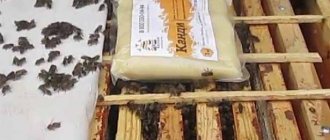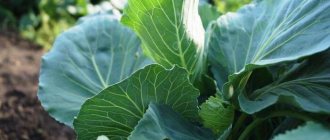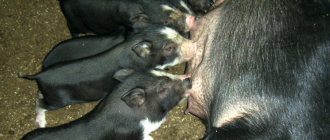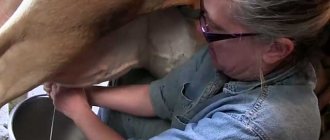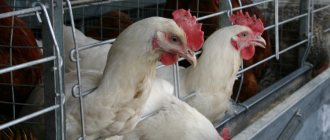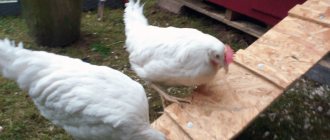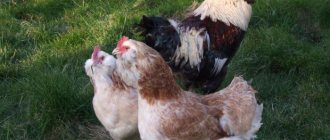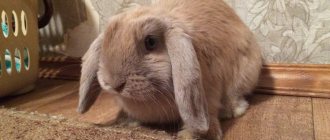Screw with a brake and a vacuum cleaner
The wild boar is an unpretentious animal, not picky about food, but often, in order to raise a healthy wild boar, as well as increase the number of these wild animals in the hunting area, it is necessary to carry out a number of biotechnical measures for feeding and maintaining game.
Gamekeepers and game wardens strictly monitor changes in the number of wild boars in hunting areas. Systematic shooting of this animal requires a constant increase in the number of wild boars. It is this goal that guides the hunting rangers when carrying out complex biotechnical measures.
There are few suitable places for wild boar to live and breed in western Russia (swampy floodplains of rivers and streams, reed swamps, deciduous forests with developed undergrowth). Achieving a high density of wild boar in such places is one of the tasks of organizing feeding areas. Our landscape is characterized by a mosaic pattern of wild boar habitat, and the capacity of land suitable for wild boar habitat has its limit. So we are trying to increase this capacity.
Do you think that you can just pour in some feed and the wild boar will come running when shot? No, friends. It is fantastic. To begin with, you need to understand that all these activities are a strictly scientific exercise, and it is categorically impossible to indulge in ad-libbing in this matter. You'll just ruin everything.
For example, banks have two principles of working with the population: “Distributing” and “Hoovering” - that is, as in the philosophy of Taoism - a time to scatter stones and a time to collect them. When to issue loans to the population and when to collect deposits. It's the same with wild boars. There is a time to “Slow down” (that is, keep the boar with you), and there is a time to “Hoover.”
Feeding encourages the boar to stay in place. The increase in livestock in this case can be up to 30% compared to last year’s winter count. However, a large share of this increase will be taken by hunters and poachers, i.e. In such a way as “brake”, the boar can be “increased” endlessly, but it will not significantly increase. It should be noted that with a density of 3 wild boars and below for every 1000 hectares of total land area, it is no longer possible to hunt at all. This means that there is simply no wild boar.
Photo — Andrey Shalygin
In this case, it is necessary to use an intensive method, which is called a “vacuum cleaner” and consists of moderate feeding at the borders of hunting grounds and excessive feeding in the center of the territory. This leads to the fact that all the wild boars from a radius of 50 km, or even more, can gather on your farm. You will shoot them, and more and more newcomers will join the ranks of the boars. You need to understand that in this way you are not so much breeding it as stealing it from your neighbors.
The territories where the wild boar has never lived and, according to its biology, theoretically should not live (North-West Russia), however, when carrying out biotechnical measures related to feeding and protection, are quite actively populated by wild boar, which makes it possible to carry out effective hunts for it. Recently, there have been more and more frequent reports that wild boar have proliferated everywhere, and are even preventing normal farming in the localities.
At the same time, attempts to resettle European roe deer in these territories, which are almost impossible to feed, were unsuccessful. It is impossible to attribute this only to climate change. The principle of operation of the feeding platform “vacuum cleaner” is possible where the wild boar lives independently in its natural environment. But in many regions of our country, where wild boar is now a common object of hunting, it did not live at all before the start of feeding. The boar could appear and survive only when a person wanted it and spent time, effort, and money on it. The creation of fertilizing under these conditions played one of the most significant roles.
This activity looks quite simple from the outside. In fact, feeding areas are equipped in the fall, feeding the wild boar, and creating “paths” along which the “piglets” will find these very areas. And sometimes you even have to drag a drag out of rotten fish so that the boars go to the right places. Sometimes finely crushed fried flour is scattered.
It attracts very well, but after rain it rots and loses all its qualities. You can replace it with an oil mixture, mixed with some of the bulk feed.
Types of wild boar hunting
For winter hunting, you need to choose a place close to the reeds, closer to the forest and dense thickets. Ruined anthills, tracks in the snow and boar droppings will help determine the location of the animal. Experienced hunters know how to feed a boar and lay out the food during the day, and when evening comes, they go hunting.
Today, there are several common methods of hunting wild boar at different times of the year. Among the most common methods are those that are safe for beginners, namely from a tower. Experienced hunters prefer round hunting with a drive, stealth with an approach and in the field.
Oblavnaya with corral
Wild boar hunting in a pen in winter is carried out with the participation of a group of people and without the involvement of dogs. To participate in this type of boar fishing, the group is divided into beaters and shooters. Fishing begins with studying the habitats of game and the location of feeding grounds for boars.
Figure 7. Driven hunting is one of the most productive
Upon completion of the collection of information, an action plan is drawn up and everyone goes to their numbers on the ground. The beaters are sent to the starting point of the route, and the shooters are sent to the indicated positions for firing. A roundup hunt with a drive is carried out only during the day, while it is light outside. This timing is explained by the fact that the shooters will fire at the cleavers from a distance of 100-150 meters and shooting accuracy will be the decisive factor in the successful completion of fishing (Figure 7).
A manhunt with a hunting pen has the following features:
- It must be remembered that the wild boar will run away through dense thickets and bushes. Therefore, these parts of the forest will be the best place for shooters.
- After the wild boar is picked up by the beater, it will try to return to the place from which it originally came.
- It is required to know the exact location of the animal's den.
- The beaters should knock softly on the trees, talk quietly and move slowly around the paddock. If you implement the listed nuances, the cleaver will run towards the shooters.
The arrows on the number should not make noise, as extraneous sounds will scare away the boar. It is best to take a shooting position near a stump or tree so that you can hide from the wounded animal. To avoid accidents, shooters are prohibited from leaving their positions until the end of the hunt.
Stealth with approach
Hunting wild boar in winter from the approach is not recommended for beginners, since it requires a good knowledge of the habits of the cleaver, as well as maximum attention and dexterity. This type of fishing can be carried out at any time of the day. For example, during the day you can catch an animal lying down, and at night you can follow the trail and find it feeding (Figure 8).
When hunting stealthily with an approach, it is necessary to observe the strictest regime of silence and move only against the wind, since a sleeping animal can be easily startled, because it has a well-developed sense of smell. When searching for an animal, binoculars can be useful: with their help, you will have a better chance of identifying the location of the boar and sneaking up on it unnoticed, without spooking the game. You also need to know that wild boars rarely change their bedding and feeding places, and if such places were discovered, then it is worth remembering them so that later you can get a trophy from ambush.
Figure 8. When going fishing, it is best to scout out the habitats of animals in advance
Hunting for wild boar at night begins by walking around unharvested fields, since this animal is most often found in such places. At night in the field, it will not be difficult to hear the cleaver, since it makes loud sounds when feeding. Thanks to such noise when eating, cleavers allow the hunter to come closer, within shooting distance. You need to approach carefully and without unnecessary noise, and if you come to the optimal distance for a shot, you need to hide and take careful aim in order to kill the game the first time. In general, stalk hunting in winter is easier, since precise tracks of a wild boar can be found in the snow.
From the tower
In winter, wild boars lack food and this can be taken advantage of by hunting them from a tower. If you set up feeders near the ambush site, the animal will come into the trap prepared by man at night (Figure 9).
Note: This type of animal fishing is carried out exclusively at night, when wild boars come out of their shelters in search of food.
During the day, food is poured into the feeders and the hunter must take his place on the tower before dark. The main condition for such fishing is compliance with certain rules, in particular, a regime of silence, so as not to frighten the animal. The fact is that a wild boar may not come to the feeder right away and will have to wait for this event. When boars appear, you should not shoot immediately, as they may not immediately come to the feeder and you need to give them time to calm down. Before hunting on a tower, it is not recommended to actively move, since sweat secretions can saturate clothing and thereby scare away wild animals.
Figure 9. Hunting from a tower is considered the safest
If shooting occurs while animals are feeding, pay special attention to the tails of the game. When feeding, the hooker's tail constantly moves, but as soon as something alerts it, the tail instantly sags. At such a moment, it is recommended to hide and not move so that the animal does not notice the hunter and starts eating again.
In general, hunting game from a tower is based on the following rules:
- High-quality camouflage.
- Maintain silence and maximum attention.
- Silent clothing, shoes and ammunition
- Shoot at a wild boar only if there is shelter where you can hide from the wounded animal.
- It is forbidden to alone pursue a wounded wild boar, which can be deadly.
In field
It is better to hunt game in the field in summer or autumn, since at this time it is much easier for animals to find food in the open space. But in some cases, for example, in unharvested fields, such fishing is practiced in winter (Figure 10).
Note: Hunting wild boar in winter with dogs is not recommended, as these animals can scare away the game or a wounded boar will mortally wound your assistant.
In the fields you can hunt from a stand or from a hunting tower. Before installing a storage shed or tower, you should determine exactly where the wild boars come to fatten. This can be done along the paths laid by boars to the feeding area.
Figure 10. Finding a boar in a field in winter is quite difficult.
In areas without bushes and trees, spotting a wild boar will not be difficult, since it will make characteristic sounds while eating. It is recommended to approach a wild animal against the wind, silently and waiting for the moments when it freezes and listens to sounds. In winter, wild boars visit unharvested fields of oats, peas and corn. You can find a suitable field for installing a tower or storage shed in this way: walk along the edges of the fields adjacent to the forest or woodland, and finding a boar path or dug up earth will indicate that this is the very field where wild boars fatten.
Planted corn
It is almost impossible to make such fertilizing that strangers will not find. Therefore, the arrangement of feeding should be chosen not only based on the wild boar’s habitat, but also for ease of control.
However, if you just set up a site in the fall, nothing will come of it at all. The boar must be left to live in the area if it appears there. To do this, in the summer you determine the places of more or less permanent habitat of wild boar families, their day and night transitions. In the area with the highest probability of wild boar habitat, plant fertilizing fields in the fall (the field area is at least 2.5-3 hectares).
To prevent the wild boar from leaving the field area, a feeding area is installed next to the field. A feeding area is equipped under a canopy, where grain, potatoes, corn, apples, etc. are scattered, a bath is made with waste or diesel fuel in the summer, as well as a salt lick in the winter.
If a fertilizing site is organized not far from farmland and in sufficient transport accessibility for agricultural machinery, then it can be conveniently plowed, weeded out, and cleared of grass, immediately sowing both fodder grains and root crops.
In the places where you will sow the feeding field, think in advance about hiding places, as well as about feeding for hunting when the fields are over. Place fields and fertilizing areas away from access areas of vehicle hunters (farmers) and do not forget to organize control to prevent their access to the fertilizing areas area.
However, one should not think that even planting a corn field will dramatically change the situation with wild boar. Not so. Lands and their suitability for housing a certain amount of game are assessed according to quality classes (class 1 is the highest, class 5 is the lowest). According to regulatory documents, fertilizing on sites and feeders does not affect the quality class of land at all!
They counted and shed tears. Only crop fields begin to influence the number of wild boars, and then only if there are at least 20 hectares of them per 1000 hectares of land. Then the quality class will increase by 0.2... For example, you have a not very high 3rd class of land quality for wild boar. This means that ideally there could be a maximum density of 6 animals per 1 thousand hectares. Even if you sow 20 hectares of land for every 1000 hectares of land, you will raise the quality class to 2.8. And this means not 6.0 wild boars per 1000 hectares, but 6.6 wild boars per 1000 hectares. A big difference ? No.
Well, even if you raise the quality class by half a point (and this is a lot), then you can ideally have 7.5 wild boars per 1 thousand hectares versus 6.0 without feeding... And feeding itself simply concentrates animals in territories known to people and this creates an opinion that the boar has become much larger...
Eat up with nickels
What are zootechnical measures to support the number of wild animals in hunting areas? The main and main thing is feeding. Experienced huntsmen know that even such a hardy animal as a wild boar can find it very difficult to get food in unfavorable natural conditions (drought, severe frosts, prolonged downpours, heavy snowfalls). In order for wild boars to “boar” (in the literal sense of the word) and be able to produce healthy and hardy offspring, fodder fields are set up on the hunting farm, which are sown with grain crops. In forest belts, special feeders (troughs) are built in which grain is poured. In addition to grain crops, the boar feeding menu includes baked goods and, without fail, salt.
Salt is necessary for the normal functioning of any body. Wild animals have a hard time, because it is very difficult to find salt in the forest. Special salt licks for wild boars are installed in places where they constantly feed.
The enclosure keepers know very well that if the wild boar herd is limited in its movement even a little, they will sweep out the enclosure to such an extent that even no grass will grow in it over a huge area.
Feeding wild boars in certain places of the hunting ground is not only aimed at increasing the number of animals. Constant feeding “ties” the boar to one place, which greatly facilitates the subsequent process of hunting it, because the huntsman will know for sure at what time and in what place the boar will appear.
In addition to providing additional feeding and additional watering places (in dry weather), the farm’s rangers also take care of the health of the wild boars. Wild boars, like domestic pigs, are big fans of wallowing in the mud. Adding regular diesel fuel to the “bathing” areas of wild animals helps wild boars get rid of insects - parasites that live on the skin of animals, and protect themselves from annoying gadflies, mosquitoes and midges. Having wallowed in a puddle of mud mixed with diesel fuel, the boar goes about its boar business, while the dirt and diesel fuel, drying on its hair, turns into a kind of shell that prevents insect bites and gets rid of fleas.
How to hunt: general rules
At different times of the year, boar hunting differs in timing: in August-January it is allowed to hunt males and young animals, and from January to August, females. To achieve success in driven wild boar hunting, you need to learn the habits of the animal and follow safety measures. Before heading to the hunting grounds, it is recommended to study the area, which will help determine the feeding area of the wild boar herd and determine their population.
Note: For example, wild pigs can often be found in corn fields, where they forage for food in unharvested crop debris.
When moving through the forest, pay special attention to inspecting the trees; if their bark is stripped high, this will indicate a large boar. The study of boar tracks should not be carried out on a path trodden by animals, as the foreign smell may scare away the game. The process of tracking and lying in wait for a wild boar must be carried out against the wind, since the animal has a good sense of smell and can smell the hunter several hundred meters away.
Figure 4. When hunting for a cleaver, the main thing is to be careful
To increase the chances of hitting the boar's heart, you need to aim for the shoulder blade area. If the shot at the boar was successful and it fell, then under no circumstances approach the lying animal, as it may be wounded and rush to attack. Wounded animals are much more dangerous and ferocious, and can cause serious injury to the hunter (Figure 4).
Borya-borya-borya...
Feeders for wild boar: as a rule, they do not have any special device. The boar takes food only from the ground, so most often the food is simply dumped on the ground or in a hole specially dug for this purpose. Arranging a canopy is not necessary if it is regular feed and not special feed (which is washed away by precipitation).
Usually, on the site of one round (12-15 thousand hectares) 3, less often 4, fertilizing are done. If funds and desire allow, then the number of sites can be significantly increased - this is only a “plus”. Most often, in order not to bother, huntsmen immediately make salt licks, hay for the goats, hang brooms, and solar blankets. But this is more likely to save your own effort and money - because. if the boar came to eat, then the goats and all other animals will leave there for the duration of the pig snack.
It is possible to clear the area (and dig a silo pit) for fertilizing, and the access to it, in the summer; they begin to export feed in September-October; if you start earlier, the exported feed begins to germinate and becomes unusable. Little by little, exports are constantly renewed, until February-March.
Grain waste, corn (both in grain and on the cob), various root crops and feed are used. The volumes depend on the livestock, but in any case, one delivery is no less than a car, since otherwise the biochemical reaction of ensiling does not occur.
Grain waste is laid out on a cleared area with the turf removed, creating a “cushion” that can be torn apart with the nose.
For feeders, you can use simple barrels. Or, two holes of approximately 20X20 are cut out from the sides opposite each other in the lower part and a sheet of rubber from a conveyor belt is attached from the inside, and the barrel is mounted on a platform with sides (as in the photo). An inverted bucket is placed inside the barrel and the wild boars manage to drive out every single grain. A very convenient thing if you don’t have the opportunity to feed every day. A barrel holds 4-5 bags of grain and is usually enough for a week. To prevent the grain from sticking into the barrel, we place a couple of sticks on the crosspiece so that the ends stick out from the corners, then the wild boars themselves loosen the grain in the barrel. Grain consumption is sharply reduced compared to laying it out on the ground or in a trough. Typically, wild boars trample more into the ground than they eat. Everything is very neat here.
The wild boars cling to the barrel - tightly.
For small piglets, a fence is made, through which adults cannot go inside and take food from the baby. The distance between the reshts is 20-25 cm:
Young animals can be allowed inside not only by the width, but also by the height of the opening. The width pass is more effective, since it allows thin people to pass through, but in this case you need to look at the screens for “stuckness.” Climbing holes from below also have a disadvantage in crawling through, for which a support log is fixed at the very bottom to prevent undermining and squeezing sideways of large individuals.
Piece by grain
It is impossible to feed wild boars, but it is possible to support them in difficult times. Usually once a week a couple of bags of oats and two or three buckets of potatoes are poured out. Sprinkle the oats not in one heap, but in several small portions at a distance of 5-8 meters from one another. This makes it possible for both young animals and adults to feed at the same time without interfering with each other. In a bypass of three fields, hunting is carried out in only two, one field remains “reserved”.
As for “feeding” the livestock, this is practically unrealistic, since such expenses cannot be justified by any livestock. An adult boar needs approximately 4 kg of dry food per day. Accordingly, for example, for 70 Dolgolugovsky wild boars - For six months: 180 days x 4 kg x 70 wild boars = 50,400 kg of dry food. Of course, we can only talk about feeding, and not about feeding.
The bait is organized according to the following distribution standards: root crops 1-1.5 kg; grains 0.5-1.0 kg. Standards for an adult.
Periods: November 15 - December 1 - 1/4 of the recommended daily intake; December 1 - January 1 - 1/2; January 1 - March 15 daily norm.
Photo — Andrey Shalygin
However, there is one small “BUT” here too. If heavy snow falls for a short time, then the wild boars gather in large herds, make wide paths for themselves and thus escape for some time. But this cannot continue all winter, since due to the high concentration of animals in a small area, a shortage of feed occurs very quickly. It’s almost as if all the residents of the city suddenly started going to only one store...
Therefore, in winter, in high snow, it is necessary to make paths for wild boars with snowmobiles, arranging for them an extensive system to bypass several areas, as well as access to natural feeding areas. Of course, the wild boar will also use existing roads for transport. Therefore, they need to be equipped with appropriate notices and made detours around them. If a wild boar comes out onto the road, it means there is not enough space and conditions for it along the paths in the forest, or the number has gone through the roof.
Recommendations from experienced hunters
Boar hunting is not an easy trade. In fact, this is a very dangerous activity that can cost the hunter's life or cause serious injury. Only good knowledge of the habits and characteristics of this fishery will help you successfully obtain a trophy.
When going hunting, try to adhere to the following precautions:
- Shelter for the hunter: at the time of shooting and preparing to shoot at the animal, you need to be near a boulder, stump or tree. This precaution is necessary in case something goes wrong and you have to hide from a wounded animal on the ground.
- Accurate shot: there are many ways to kill a boar the first time. For example, it is better to shoot at a boar in the side or along the ridge, but the most ideal place is under the shoulder blade, or the animal’s ear.
- Pursuit: It is not recommended to follow a wounded cleaver, as it can go far into the forest, or even attack a person (if the wounded animal sees the hunter). The most dangerous thing is to approach a boar from the front, when its ears are flattened and its fur is bristling.
The process of hunting wild boars is shown in more detail in the video.
Boars on diesel fuel and rotten herring
If feeding areas are constantly working, and you don’t want to scare the animal into feeding, then feeding and slaughter should be separated. Therefore, for shooting, separate baits are made away from the feeding areas.
Why do wild boars love diesel fuel? Just like rotten fish, the smell of diesel fuel causes wild boars to fall into a state similar to that of cats after valerian. This is a kind of mark, like a dog falling into a dead cat. It stinks a mile away, but the dog is happy. In the summer, covered with a solar film, they escape from the horse flies, gadflies, ticks and other blood-sucking creatures that plague them. The smell of diesel fuel, to one degree or another, is background for them from birth (agricultural machinery in the fields, cars and tractors in logging, summer haymaking, etc.). Some hunters even practice lubricating their boots a little with solarium before each hunt - it covers up the smell of a person and does not cause alertness (but this is not an acquired taste).
SOLAR COVER (CAN BE FROM EXHAUSTING). Boars need to have a place for a “big scratch”, as well as the opportunity to notice a strong smell. It also helps against parasites.
The main types of baits for wild boar are made like this (from the stories of hunters). It is prohibited to do this without known drainage of the site, without the possibility of subsequent selection of soil, and in dry times:
On a puddle
The site of the proposed ambush is being inspected. It's best on the way to the fattening field. He walked around the field he was visiting, identified the most well-trodden paths, and found the nearest watering hole (maybe a small, never-drying puddle). It is into such a puddle that diesel fuel is poured. Don’t worry, pigs always have a couple of “spare” watering holes in stock. The best thing is for the puddle or swamp to be smaller, but even if this is not the case, it doesn’t matter. About 20 liters of diesel fuel are poured out and, for greater effect, 20 or more liters of used oil (not a problem in any auto repair shop).
I poured approximately the same amount onto a non-drying puddle 2 by 3 meters, but this is not strict. The pigs will wait two or three days, after which the pilgrimage will begin. Both singles and herds are suitable. There were nights when the entire puddle was splashed all over the area, leaving only a thick slurry.
After this, you will have to apply water from the nearest reservoir in milk cans. If they started climbing in the middle of summer, they will continue climbing until the cold weather hits. I often just watched them splashing, very funny and interesting. No need for meat, let me admire it. A cleaver the size of a Zaporozhets lies there, and like a kitten, it rocks on its back, rubs itself, its paws are raised up. Very exciting and educational. After use, the puddle soil must be removed.
Wild boars will love your solar puddle so much that they will hide in it not only from mosquitoes, but even from dogs. Dogs cannot stand the solar stench and will not climb into such a puddle after a wild boar.
Per winding
The second method is much more economical and environmentally friendly. But no less “fruitful”. Take a couple of the heaviest bags (from classic burlap, nettle, hemp, etc.) Cut it at the seams. The resulting canvas is as wide as a bag, and two and a half meters long. Take 20-30 meters of good, soft and elastic wire in advance. Choosing a bait location - see above.
Only here, near the feeding trail, you choose a couple of trees growing nearby (from experience, I prefer only deciduous ones, although my colleagues and opponents also used coniferous ones). The distance from the trail can be 30-50 meters. Wrap the tree trunks near the base (along the butt) in a circular shape.
Then carefully (!!!) fix this harness with wire at three or four levels. All is ready. Bring diesel fuel in plastic bottles (1 two-liter bottle per trunk), apply diesel fuel evenly through the perforated lid around the trunk throughout the burlap (baby spray principle). But even at the stage of selecting trees, I advise you to take care of a good field of fire (30 meters so that everything can be clearly seen).
You can have one tree, the smell is the same, but I make two, otherwise they start squabbling and fighting. The solarium should be renewed approximately every three days (it evaporates a lot in the summer). It happens that they rub against the bag so much that one wire hangs and there are rags - replace it with a new one. Knit the bag as low as possible, otherwise the little ones will feel uncomfortable (and you need to respect the animal and take care of its comfort).
It won’t work on a whim (arrived, spilled diesel fuel, slammed it, left). At least five days or a week will pass before it’s worth sitting down for the night.
On eggs
Exotic, but effective for both amateurs and professionals. You need to take eggs from a slaughtered breeding boar (even better if you manage to cut them from a wild cleaver from a hunt). Just so that the boar is “untied” (eggs of piglets castrated on pig farms do not give the desired effect). If you don’t go “fishing” right away, then you can store as much as you like in a bag and in the refrigerator or freezer.
Before going hunting, defrost the eggs to normal temperature. Shred them into relatively small pieces. Throw it into some container (I stuffed it into two five-liter plastic bottles) and fill it with ordinary water (preferably well water). Let this whole thing sit for 12 hours, maybe a day (just not in the heat!).
You probably already know the trails and places most visited by wild boars. When you arrive at the hiding place, you spray some water on the bushes, along the tree trunks, then shake out of the bottles what was once the “pride of the boar.”
We just have to wait. It works especially well in November-January. The boars are already overexcited, each of them is “in a creative search.” The whole calculation is based on this desire to compete with another boar. However, in this case, you will not get a wild boar going for feeding, but especially a cleaver and a large wild boar (they fly straight to the smell). The boar is excited and aggressive to such a bait, make allowances for this in your actions
The smell of boar pheromones spreads quite a long distance, so the animal will approach even from the neighboring kilometer block. It’s worse when they have a tournament somewhere nearby, then more than one can come, with an interval of half an hour. And from now on, I advise you to take the cut eggs from hunts, they will come in handy.
Types of bait
The most popular baits for wild boar in Russia are additives based on grain crops. These are brands such as CRACK and HOG. However, both of them do not show good and prompt results. Therefore, there is no need to expect a miracle when hunting. Boar bait is essentially an artificial flavoring, similar to the secretions of a forest cleaver, or an excited female. Such baits show high efficiency in any weather.
The following baits performed well during hunting:
- A tarry brown liquid that smells like smoke.
- A mixture of fruit and corn oils with a mushroom scent.
In addition, baits may include the following components:
- Analogues of female and male urine.
- Discharge from an excited pig.
- The smell of fermented fruit.
- A substance that eliminates the smell of people.
- Smoldering sticks.
The set of odors is determined by the boars’ reaction to them. Too strong a smell will scare away, and a slight aroma will attract animals. This does not apply to the smell of the food. In this case, the situation is exactly the opposite. The greatest concentration attracts the boar more strongly.
The weather also affects the choice of the right scent. You need to know that with increasing humidity and temperature, the evaporation of aromas increases. The strength and direction of the wind is of great importance. It can reduce or increase the sensitivity of animals to aroma.
Today in stores you can buy special scented gels that are used to attract wild pigs. They carry odors similar to real ones. In this case, the boar will no longer pass by him. Natural ingredients are used in production. Therefore, their use in hunting does not harm the animal world. This gel can be used to treat grass, trees, soil, and snow near the hunter to distract the animal from the smell of a person.
An old hog bait is waterproof resin. It is very effective and has a strong aroma. Hunters also use kerosene for bait, which is quite effective.
Diesel fuel
How to lure a wild boar in the summer using specific means? As a rule, they use a shallow, drying puddle into which about 20 liters of diesel fuel is poured. According to hunters, a couple of days after this, the pigs will start swimming. In such a puddle, animals take refuge not only from parasites, but also from dogs who will not follow them into the disgusting slurry.
According to hunters, wild boars are attracted to the smell of diesel fuel, perhaps due to their constant fight against parasites. Therefore, animals love to rub against surfaces with a specific aroma.
Also, nearby bushes and tree bark near the path where wild boars walk are sprayed with waste oil.
Non-standard bait methods
How to quickly lure a wild boar in the summer, knowing its special inclinations? It is known that these animals are not indifferent to beer production waste, so the wort left over after brewing will attract them and will be remembered for a long time.
What else to feed a wild boar in the summer? You can pack the grain in a plastic bag, making a cut in the middle so that animals can come to it several times, and the food will remain safe from rain and other unfavorable factors.
During the winter season, it is good to organize bait with the help of a decoy pig.
